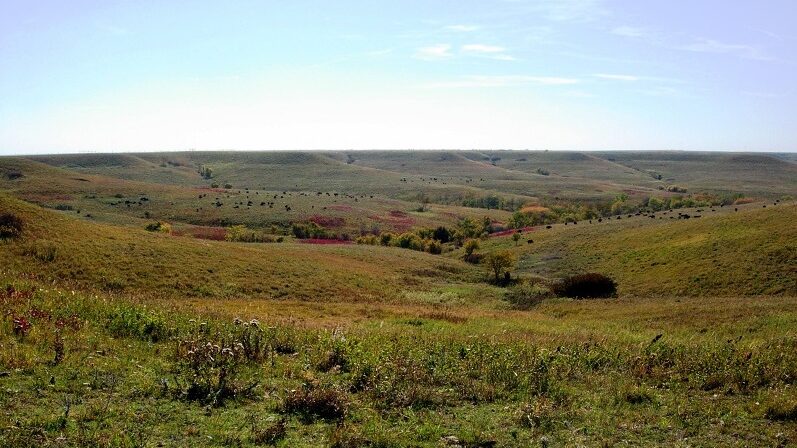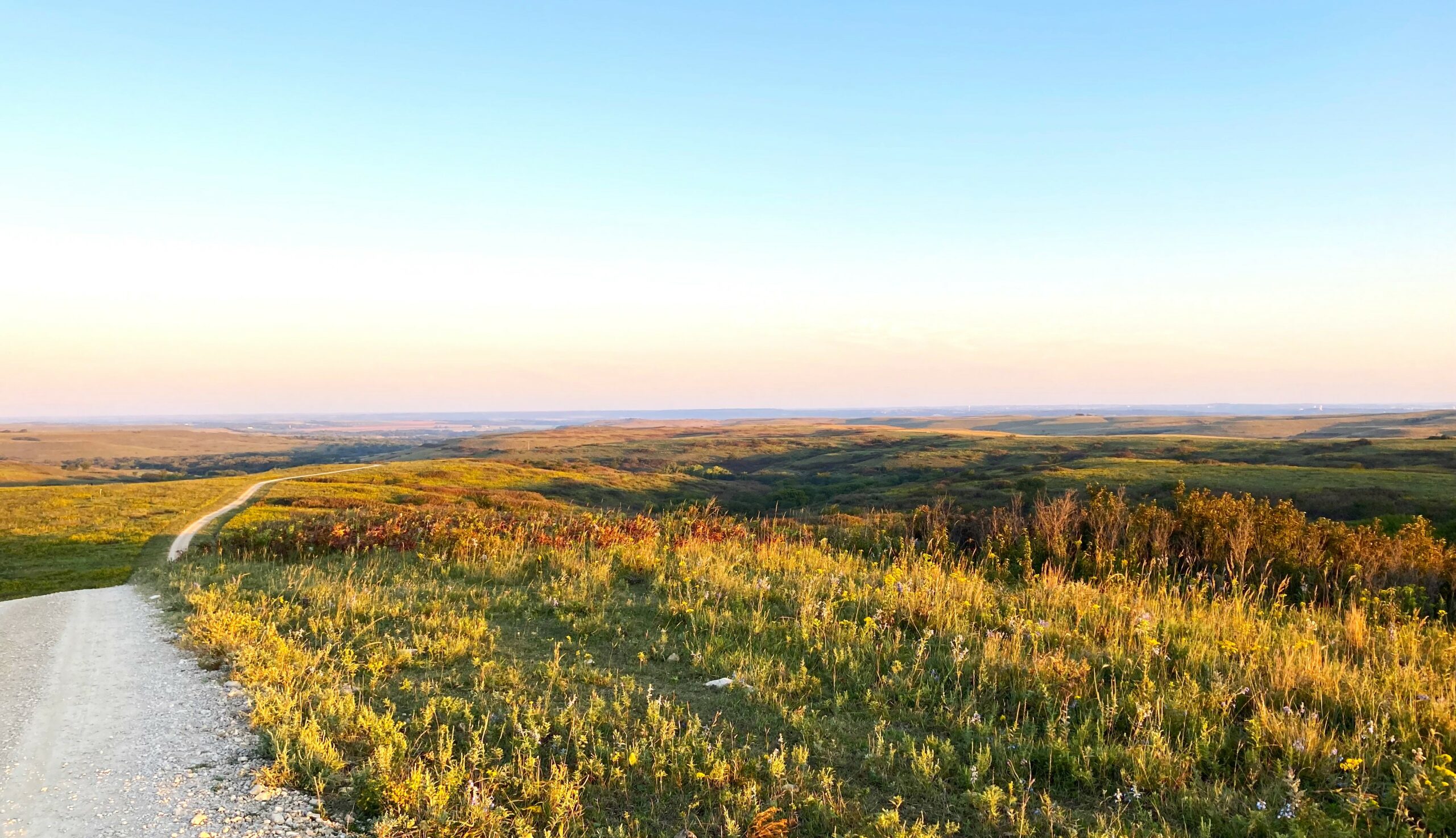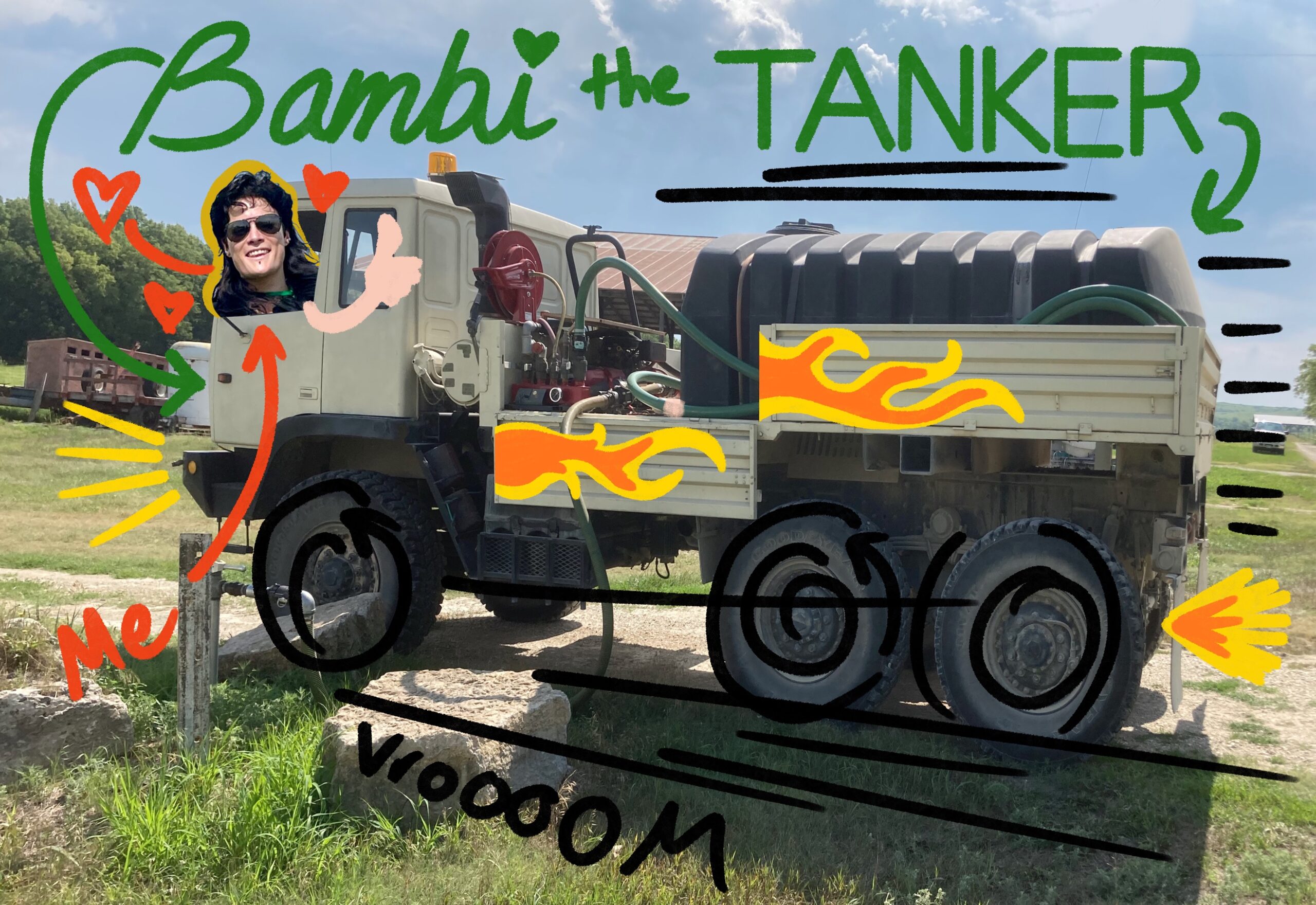
This post is part of the LTER’s Short Stories About Long-Term Research (SSALTER) Blog, a graduate student driven blog about research, life in the field, and more. For more information, including submission guidelines, see lternet.edu/SSALTER
by Mary Linabury, graduate student Colorado State and the Konza Prairie LTER
During the summer of 2021, I was gearing up to apply a major experimental treatment that would define my PhD research. Peers warned me that this first field season would likely be “a disaster,” as I would have to contend with the unforeseen hurtles that plagued all new research endeavors, but I wasn’t worried. I knew how to run an ecological experiment, manage a team, and was no stranger to field work. That confidence would prove to be…too idealistic.
This “major experimental treatment” I mentioned was a simulated rainstorm. As global change continues to intensify the climate, more extreme droughts and floods are expected. If we’re going to predict the impact of these events, sometimes we need to play God and make it storm on a sunny day.

Credit: Mary Linabury, CC BY-SA 4.0.
This treatment would take place within a broader experiment called ChANGE (or the Chronic Addition of Nitrogen Gradient Experiment). ChANGE is a long-term nitrogen addition project in the beautiful tallgrass prairie of the Konza Prairie Biological Station and LTER located within the Kansas Flint Hills (above image). In addition to a changing climate, human activities have also altered the nitrogen cycle. Even remote, relatively undisturbed ecosystems are becoming flushed with reactive nitrogen. Water and nitrogen are key resources in grasslands – what happens when an already fertilized ecosystem is struck with an influx of rainwater? This gets at the crux of my research: to understand how varying levels and patterns of resource alteration will affect native plant communities. We need to understand how these forces are going to interact now, so we’re not taken by surprise tomorrow.
This wouldn’t be an easy task. For this experiment, I needed to simulate a rainstorm of epic proportion. I required over 4000 gallons of water to be transported up to my field site then stored until it could be “rained” onto my plots. This is when my confidence started to shake. I would need a lot of help and a lot of resources.
I spent many weeks working out the logistics, prepping water pumps, and watching the forecast—we needed a week without rain to apply this treatment. Finally the forecast was clear. Our even-keeled site manager gathered the troops to start hauling supplies. We formed a convoy up to my field site: two trucks with giant water tanks lashed to their trailers and “Bambi,” the water tanker. Bambi is an old military water tanker on permeant loan from the nearby army base; she’s out of place on the hills of Konza prairie, but I enjoy seeing her rumble across the horizon.
We arrived at my field site without issue. While the others unloaded the water tanks, I set up the small pump that would be used to simulate rainfall. My confidence shook again when I realized that I had forgotten to account for the number of hoses we’d need to reach the plots, which meant that water flow was weak. Confidence shaken, but nothing that a few late nights couldn’t solve.
Then I noticed storm clouds brewing above the grassy hills.
It was NOT supposed to rain today—it wasn’t meant to rain for the whole week. I needed a week of dry conditions to apply this treatment, I had already postponed this enough. It COULD NOT rain now. This treatment would define my PhD research, people had invested time and money, now it was going pear-shaped. Rain would screw up the whole thing, it would disrupt the theoretical framework that—
Our site manager asked if I wanted to drive Bambi back.
Yes.
YES, I WANTED TO DRIVE THE MILITRARY TANKER TRUCK.

Credit: Mary Linabury, CC BY-SA 4.0.
I ascended the many steps up to the cab to get behind the tire-sized steering wheel. Our manager showed me how to start Bambi up, put her in gear, and get her moving. I delighted in sitting tall above the prairie while learning how to crank through the many gears.
I now invite you to notice the trucking puns in my title. Thank you.
A smile returned to my face once we were back at the station. My problems were not solved, but I was back on mentally stable ground.
Many of us ecologists developed our scientific curiosity as kids flipping over rocks to look for many-legged critters, splashing through streams to watch the minnows scatter, or driving dirt bikes through expansive old field pastures that hummed with insect song. It’s that child-like curiosity that inspired us to learn more about our surroundings. For me, it’s essential to have some childish fun in the field. It lets me reconnect with the curiosity and delight that originally sparked my love of nature, whether that’s chasing down a cute lizard, bringing hordes of candy into the field, or driving a big cool military tanker. Connecting with your inner child prevents the adult pressure and stress from overcoming you.
As my peers warned me, my field season wasn’t easy, but it wasn’t “a disaster.” A few thunderstorms drove me from the field, the water pump blew a gasket, and the bison made a habit of blocking the road during my busiest days. But throughout that, I remembered to take time to film silly videos with my students, parade around the weird bugs I found, and coo at the baby cows in the neighboring pasture.

Mary Linabury is a PhD candidate in Melinda Smith’s grassland ecology lab at Colorado State University. She studies the effect of long-term resource alteration in grassland ecosystems. In particular, she wants to understand how plant community dynamics interact with changing resource availability to shape the future of great plains grasslands.










